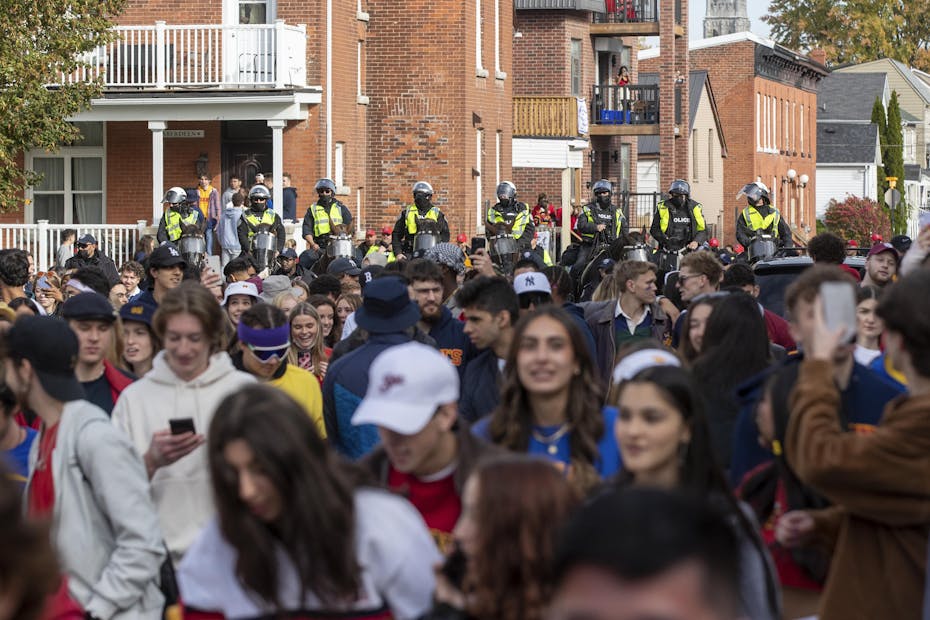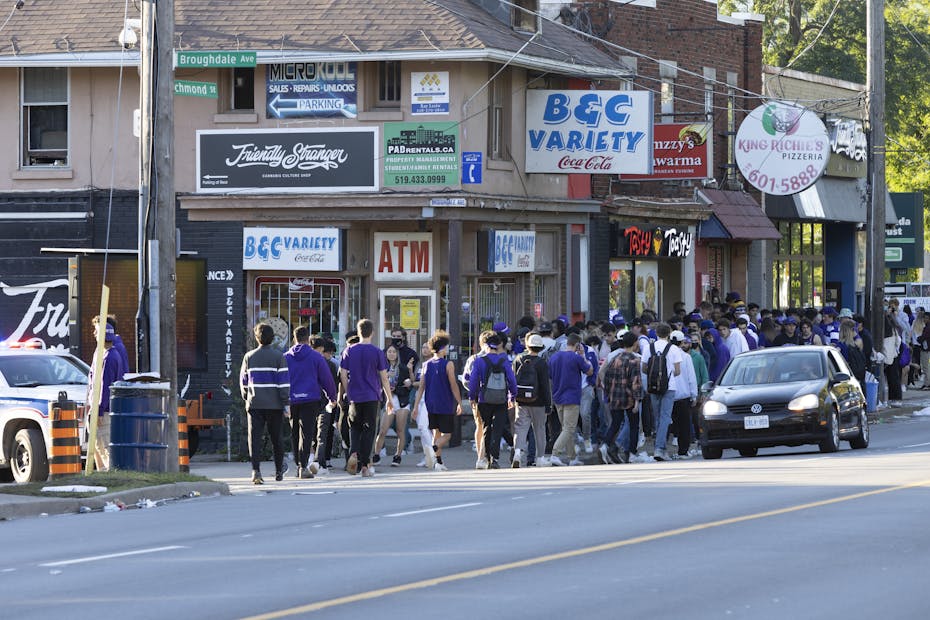
Every year instructors carefully plan what they’re going to teach during the semester. Then something significant happens that makes us pause and we have to resist the temptation to teach what was planned for the next day.
The perfect storm was created over the past two weekends at Queen’s University, with large student gatherings during homecoming that violated public health regulations, saw excessive drinking, risk taking and misogynistic attitudes and behaviours displayed by some of our students.
Our attempts to teach what we had planned seemed irrelevant. As instructors who teach and research peer processes in aggression, curriculum transformation and how to leverage curriculum to respond to local and global challenges, we felt the need to respond.
We had deep concerns about the behaviours and attitudes that were demonstrated, and were saddened that this didn’t reflect our experiences with the students as we know them in the classroom. That urged us to have discussions that required critical thinking and reflection about what had happened and the impact it had on the students, the university and the community.
What is teaching for if not to facilitate deep learning, critical thinking and personal growth in moments where we witness the values that we stand for crumble?
We need to have classroom conversations now, and make bold and innovative changes to identify long term solutions. What happened at Queen’s University these past two weekends can’t happen again.
People behave differently in groups
These gatherings are not new but there is a heightened sense of urgency to be more effective and intentional in how we address them. These conversations could start by unpacking with students why people behave differently in groups than when they are alone.
When people act in groups (like the students that gathered on the streets), they are more likely to see themselves as anonymous and this reduces their sense of responsibility and accountability.
When people are in a group they are more likely to engage in aggressive and risky behaviours they may not normally do on their own. This is likely because they think they won’t be seen or will not be caught. They also behave in ways that conform to the group which may or may not be consistent with their own morals and ethics.
In large groups, there is also a sense of diffusion of responsibility — people are less likely to take action or intervene when in the presence of a large group. All of these processes are intensified with increases in emotions, alcohol use and crowd size.

The teachable opportunity here is helping students understand why some may have behaved as they did and help them reconnect with their individual sense of identity and values. By shifting the attitudes and behaviours of the majority we can begin to shift the culture.
This requires working together to enhance students’ understanding of their behaviour, help them take responsibility, make amends and have discussions about how they can obtain their goals for connectedness and celebration in a safe and positive way.
A harm-reduction approach
The way forward likely involves a harm-reduction approach. Students will party. A harm reduction approach recognizes this need for young people to gather and socialize but sets up environmental conditions to ensure that it is done with minimal risk.
In this case, it would focus on bringing students together safely in a way that minimizes health and social harms rather than condemning or ignoring them. We need to continue to create safe environments for students on campus where we can manage alcohol consumption and behaviour while still promoting coming together and celebrating — be it homecoming or other important events.
We also need to empower students to stand up. Bystanders play a critical role — by being present they are reinforcing the behaviour and inadvertently supporting it. There were students during the homecoming events who had the courage to stand up, intervene and take action. Those are the people we need to empower, the stories we need to tell and the messages we need to amplify.
Community members have painted and strung homemade anti-misogyny signs at Victoria Park.https://t.co/EQhk9gXNdg
— Kingstonist (@kingstonist) October 23, 2021
Getting students involved
Conversations are a good start, but a systemic approach that integrates understanding of these events and taking action through curriculum is essential.
One of these strategies could be creating a university credit based multidisciplinary course that is aimed at proposing solutions for how students could gather and celebrate in a safe — including COVID-19 safe — manner that reflects their own, and community values.
The students would learn (among many things) how to address diffusion of responsibility and gender-based violence. It would provide them with opportunities to learn about city bylaws, police costs and potential challenges to the health care system of large student gatherings.
The instructors could be an advisory team of mentors including members from the city, police, first responders and university experts. This initiative would challenge students to research the problem and be an active part of the solution.
Co-creating solutions with students by providing them with opportunities to lead with support and guidance will empower them to take ownership and responsibility when it comes to implementing positive change. If they lead the new way forward, students will come and be together in a way that meets their needs.
The behaviours are concerning, but they do in a way reflect large social problems and our ongoing need as humans to be respectful and equitable. As events like this continue to happen, they take on new meaning and heightened urgency. During times like these we need to hold ourselves accountable, engage in courageous conversations, embrace student leadership and make bold curriculum changes.![]()
Wendy Craig, Professor of Psychology, Queen’s University, Ontario and Klodiana Kolomitro, Associate Vice-Principal (Teaching and Learning), Queen’s University, Ontario
This article is republished from The Conversation under a Creative Commons license. Read the original article.










